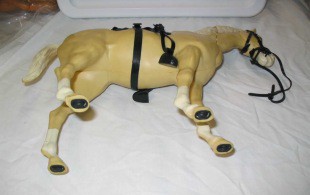However, in modern business, because of the heavy investment factors to be taken into consideration, often other strategies have to be tried with dead horses, including, but not limited to, the following:
1. Buying a stronger whip.
2. Changing riders.
3. Threatening the horse with termination.
4. Appointing a committee to study the horse.
5. Arranging a visit to other sites to see how they ride dead horses.
6. Lowering the standards so that dead horses can be included.
7. Appointing an intervention team to reanimate the dead horse.
8. Providing additional funding and/or training to increase the horse's performance.
9. Reclassifying the dead horse as living-impaired.
10. Doing a cost analysis study to see if contractors can ride it cheaper.
11. Harnessing several dead horses together to increase speed.
12. Donating the dead horse to a recognized charity, thereby deducting its full original cost.
13. Doing a productivity study to see if lighter riders would improve the dead horse’s performance.
14. Passing legislation declaring that the horse is not dead.
15. Declaring that as the dead horse does not have to be fed, it is less costly, carries lower overhead, and therefore contributes substantially more to the bottom line of the economy than do some other horses.
16. Forming a quality focus group to find profitable uses for dead horses.
17. Revising the performance requirements for horses.
18. Giving dead-horse riders an incentive bonus.
19. Declaring the dead horse "top secret" and/or deny that it exists.
20. Promoting the dead horse to a supervisory position.

photo © unknown
